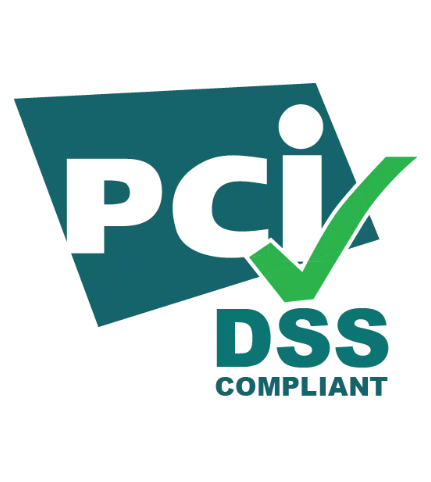
Adjusting the Company Social Benefits Fund (ZFŚS) Write-off: Obligations, Methods, and Settlements
The adjustment of the ZFŚS write-off is a mandatory procedure that every employer managing a Company Social Benefits Fund (ZFŚS) must complete by December 31st each year to align the write-off amount with the actual number of employees. This process involves comparing the planned number of employees from the beginning of the year with the actual figures at the end of the reporting period.
The Obligation to Adjust the ZFŚS Write-off
When and Why an Adjustment is Necessary
The obligation to adjust the ZFŚS write-off stems from the fact that at the beginning of the year, employers calculate the write-off based on an estimated, planned number of employees, which may change during the year. Various staffing changes can occur over twelve months, such as hiring new employees, layoffs, retirements, or changes in employment status (FTE). The adjustment allows the funds transferred to be aligned with the actual employment status, ensuring compliance with legal regulations.
The Annual Adjustment Deadline – December 31st
The adjustment of the write-off for the Company Social Benefits Fund must be made no later than December 31st of each year. This is a non-extendable deadline, and failure to meet it may result in legal consequences for the employer. Employers should plan the adjustment process well in advance to account for all staffing changes and to correctly settle the financial funds in the ZFŚS account.
Who is Subject to the Adjustment Obligation
The obligation to adjust the ZFŚS write-off applies to all employers employing at least 50 employees calculated as full-time equivalents (FTEs), who are required to maintain a Company Social Benefits Fund. This includes private sector entities, budgetary units, and local government budgetary establishments. Employers with fewer than 20 FTEs may, but are not required to, create a ZFŚS.
Legal Basis for the Write-off Adjustment
The Act on ZFŚS of March 4, 1994
The primary legal act governing the operation of the Company Social Benefits Fund is the Act of March 4, 1994, on the Company Social Benefits Fund. Article 5 of this act defines the rules for creating the fund and the amount of the basic write-off, which forms the basis for calculating ZFŚS funds. The act also specifies that the fund's assets must be held in a separate bank account and can only be used for social purposes.
Regulation of March 9, 2009
Detailed rules for determining the average number of employees for calculating the ZFŚS write-off are specified in the Regulation of the Minister of Labour and Social Policy of March 9, 2009. This regulation indicates how to convert employees into full-time equivalents and the calculation methods that can be used to determine the average employment in individual months. Based on this regulation, employers make both initial employment estimates and the annual write-off adjustment.
Determining the Average Number of Employees
Conversion to Full-Time Equivalents (FTEs)
The basis for determining the ZFŚS write-off is the average number of employees converted into full-time equivalents (FTEs). Employees working full-time constitute 1 FTE, while part-time employees are converted proportionally to their working hours. For example, an employee working half-time (1/2) constitutes 0.5 FTE.
Part-time, Junior, and Special Conditions Employees
When calculating the average number of employees, all groups of employees are included, such as part-time staff, junior employees (trainees), and individuals working in special conditions. Junior employees are converted according to specific rules—in their first year of training, they represent a smaller fraction of an FTE. Individuals performing work in special conditions or of a special nature may be the basis for an increased ZFŚS write-off.
Accounting for Planned vs. Actual Number of Employees
At the beginning of the calendar year, the employer determines the ZFŚS write-off based on the planned average number of employees. This data is an estimate based on employment forecasts for the upcoming year. After the calendar year ends, the employer determines the actual average number of employees based on the real staffing changes that occurred during the year. The difference between these values is the basis for making the write-off adjustment.
Methods for Calculating Average Employment
Simplified Method
The simplified method involves determining the average number of employees in a month as the arithmetic average of the employment levels on the first and last day of the month. This is the simplest calculation method, which can be used particularly by smaller entities or in situations where employment changes are infrequent. While easy to apply, this method may be less precise in cases of significant employment fluctuations within the month.
Arithmetic Average Method
The method of arithmetic average of daily employment levels involves summing the employment levels from all days in the month and dividing by the number of days in that month. This method provides the most accurate reflection of the actual employment status, as it accounts for every staffing change that occurs during the month. It is recommended for employers who experience frequent changes in staffing.
Chronological Average Method
The chronological average method requires adding half of the employment level on the first day of the month, the full employment level in the middle of the month (15th day), and half of the employment level on the last day of the month, then dividing the result by 2. This method offers a compromise between accuracy and simplicity and can be used by entities that verify employment on specific dates within the month.
Amount of the ZFŚS Write-off
Basic Write-off – Calculation Rules
In 2025, the basic ZFŚS write-off amount is 37.5% of the average monthly remuneration in the national economy from the previous year. According to the announcement by the President of the Central Statistical Office (GUS) on February 19, 2025, the average remuneration in the second half of 2024 was PLN 7,262.39. Consequently, the basic write-off per employee in normal working conditions is PLN 2,723.40 annually.
Optional Write-off – When It Can Be Increased
An employer may increase the basic write-off by an optional write-off inspecific situations. The basic write-off amount can be increased by 6.25% of the average monthly wage for each employee certified with a significant or moderate degree of disability. Furthermore, the employer can increase the write-off for employees performing work in special conditions or of a special nature.
Impact of Working Conditions and Employee Groups on the Write-off Amount
The amount of the ZFŚS write-off depends on the conditions in which employees perform their duties. For employees working in special conditions or of a special nature, the write-off is 50% of the average remuneration, which amounts to PLN 3,631.20 in 2025. For junior employees (trainees), the write-off is lower and amounts to 5% of the average wage in the first year of training (PLN 363.12), 6% in the second year (PLN 435.74), and 7% in the third year.
Consequences of the Adjustment
Overpayment of the Write-off – Refund or Reduction Options
If, after the adjustment, it turns out that the actual number of employees was lower than planned at the beginning of the year, an overpayment of the ZFŚS write-off occurs. In this situation, the employer is obliged to transfer the surplus funds from the separate ZFŚS bank account to the company's main current account. The refund of the overpayment must be made by December 31st of the year the adjustment concerns, ensuring the accounting records match the actual state.
Underpayment of the Write-off – Obligation to Top Up by Year-End
If the actual average number of employees was higher than planned, an underpayment of the ZFŚS write-off occurs. The employer is then obliged to transfer the missing amount to the dedicated ZFŚS bank account immediately, but no later than December 31st of the financial year. The underpaid amount constitutes an equalization of the write-off and must be transferred from the company's current account to the ZFŚS account.
Accounting for the Write-off Adjustment
Bookkeeping for the ZFŚS Write-off Adjustment
In the accounting books, the adjustment of the ZFŚS write-off is recorded through appropriate bookkeeping entries based on an internal document, such as an accounting note (PK). In the case of a decrease in the write-off (when employment has fallen), the entry is: Dr account 85 "Special Funds" (analytic: ZFŚS), Cr account 40-5 "Social Security and Other Benefits". For an increase in the write-off (employment growth), the entry is: Dr account 40-5 "Social Security and Other Benefits", Cr account 85 "Special Funds" (analytic: ZFŚS).
Reflecting the Adjustment in the Entity's Balance Sheet
The ZFŚS write-off adjustment affects the entity's balance sheet position, as it changes the value of special funds and liabilities towards the ZFŚS. The status of the ZFŚS as of the last day of the financial year is subject to inventory verification, while the value of ZFŚS cash funds is verified by confirming the balance with the bank. Any temporary differences between the balance of account 85 "Special Funds" and the balance of account 13-5 "ZFŚS Account" may result from the full amount of funds not being transferred to the ZFŚS bank account after the write-off was created, or from social expenditures being paid from the current account without reimbursement.
Transferring Funds to the ZFŚS Account
The employer is obliged to transfer the equivalent of the write-offs to the fund's bank account by specific deadlines. The cash for the basic ZFŚS write-off can be transferred in installments—the first installment by May 31st, the second by September 30th of the given year. If an adjustment increases the write-off, the additional funds must be transferred to the ZFŚS account immediately after determining the difference, but no later than December 31st.
Deadlines for Transferring the Write-off During the Year
(Note: This subheader seems misplaced in the original, often grouped with the above point)
ZFŚS Account – Operating Rules
The assets of the Company Social Benefits Fund must be held in a separate bank account, maintained exclusively for purposes related to social activities. This account is not subject to seizure, except in cases where enforcement is related to the obligations of the fund itself. The employer may only spend funds from the ZFŚS account on purposes specified in the ZFŚS Act, such as financing social activities, subsidizing social facilities, or creating company nurseries and kindergartens.
Write-off Adjustment in Budgetary Units
Specifics of Settlements in the Public Sector
Budgetary units and local government budgetary establishments use different accounting records for the ZFŚS write-off adjustment than private sector entities. Budgetary units use account 130 "Current Account of the Unit," while local government budgetary establishments use account 131 "Current Account of the Establishment." Each budgetary unit must include the amount of the ZFŚS write-off in its financial plan, which requires appropriate budget planning.
Reporting and Record-Keeping Obligations
Public finance sector entities have additional reporting obligations related to managing the ZFŚS. The adjustment of the ZFŚS write-off must be reflected in the unit's financial statements, particularly in the balance sheet and the statement of changes in the fund. Budgetary units are required to adhere to reporting deadlines specified in public finance regulations and to maintain correct accounting records in accordance with budgetary accounting principles.
Frequently Asked Questions and Practical Issues
How to Perform the Adjustment Step-by-Step
Performing the ZFŚS write-off adjustment requires several sequential steps. First, determine the actual number of employees based on staffing changes that occurred during the year, using the same statistical method that was used at the beginning of the year. Next, calculate the average number of employees for each month, sum them, and divide by 12 to get the annual average number of employees. The next step is to compare these results with the initial determinations from the start of the year and draw conclusions about the adjustment amount.
Who to Include in the Average Number of Employees
When determining the average number of employees for the ZFŚS write-off calculation, all employees hired under an employment contract, converted into full-time equivalents, are included. This includes full-time, part-time, and junior employees (trainees), as well as individuals working in special conditions. Persons employed under civil law contracts, such as mandate contracts or specific task contracts, are not included.
Should Write-offs for Retirees, Pensioners, and Disabled Persons be Adjusted?
The annual adjustment of the ZFŚS write-off only applies to the basic write-off defined in Art. 5(1) of the ZFŚS Act. Optional write-offs, including those for retirees and pensioners (who are former employees of the employer) and increases for disabled persons, are not subject to mandatory annual adjustment. The Regulation of March 9, 2009, in § 1, indicates that it concerns determining the average number of employees only in relation to the basic write-off. An adjustment of optional write-offs may only be made if the factual situation changes, e.g., if a disability certificate expires during the year.
Summary
Adjusting the ZFŚS write-off is a key element of properly managing the Company Social Benefits Fund, requiring accuracy and knowledge of labor law from employers. This process allows the write-off amount to be aligned with the actual average number of employees, ensuring financial and legal compliance. Employers must remember to complete the adjustment by the December 31st deadline and to correctly account for all changes. If in doubt about the methods for calculating average employment or how to make the adjustment, it is worth consulting with the HR department or a payroll specialist. If you need support in managing ZFŚS or are looking for modern solutions for handling employee benefits, visit nais.co and explore our tools supporting HR and payroll.
FAQ
Is the ZFŚS write-off adjustment mandatory for every employer?
Yes, the adjustment of the ZFŚS write-off is mandatory for all employers who maintain a Company Social Benefits Fund. This obligation applies to entities employing at least 50 employees (FTEs) who are required to create a ZFŚS. The adjustment must be carried out by December 31st each year to align the write-off amount with the actual average number of employees.
What are the penalties for failing to adjust the ZFŚS write-off on time?
Failure to adjust the ZFŚS write-off on time may result in legal consequences for the employer. According to Art. 12a of the Act on the Company Social Benefits Fund, non-compliance with the obligation to correctly determine and transfer funds to the ZFŚS may result in a fine. The employer may also face charges during an inspection by the National Labour Inspectorate (PIP) or during an internal audit.
Can the method for calculating average employment be changed during the year?
No, the chosen method for calculating average employment must be applied consistently throughout the entire calendar year. When making the annual adjustment, the same statistical method that was used for the initial write-off calculation at the beginning of the year must be applied. Changing the method mid-year could lead to discrepancies in settlements and difficulties in correctly determining the adjustment amount.
What documents are needed to perform the ZFŚS write-off adjustment?
To perform the ZFŚS write-off adjustment, you need HR documents confirming the employment status in each month of the year. These include time and attendance records, payroll lists, employment contracts, and documents regarding changes in employment (such as termination notices or contract annexes). Based on these documents, a summary of the average number of employees in FTEs is prepared, along with an internal document (accounting note) that serves as the basis for recording the adjustment in the accounting books.
When should the difference resulting from the adjustment be transferred to the ZFŚS account?
The difference resulting from the ZFŚS write-off adjustment must be transferred immediately after the adjustment is made, but no later than December 31st of the year the adjustment concerns. In case of an underpayment, the employer must transfer the missing amount from the current account to the ZFŚS account. In case of an overpayment, the surplus must be returned from the ZFŚS account to the company's current account. Practice shows that some entities make the actual cash flow in the first days of January of the following year, but the adjustment must be booked (accounted for) as of December 31st.





































